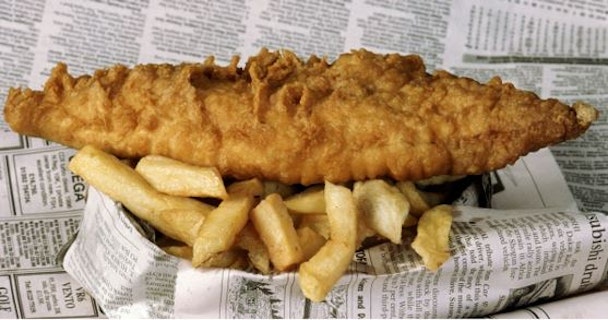Have our indigenous press publishers really had their chips?
I started my media career in 2000 at The Scotsman Publications. This was back in a simpler, pre-Smartphone, era, when Big Brother was yet to hit our TV screens, turkey twizzlers were still on the school menu and editor-in-chief and political rabble-rouser Andrew Neil held the keys to the kingdom.

Today's news is tomorrow's fish and chip wrapper
Whether or not you liked the man, his politics or his controversial stewardship of ‘Scotland’s National Newspaper’, the paper regularly sold more than 100,000 copies a day back then, so he was clearly doing something right. Or maybe he just got lucky in a pre-social media marketplace where the newsstand was still one of our main sources of news (fake or otherwise) and cover price reductions and other quick-fix marketing ploys were de rigeur.
Circulation decline
Fast forward to 2018 and the latest ABC circulation figure for this venerable title sits at just under 20,000 copies (19,792 including discounted ‘multiple’ sales). This obviously isn’t a purely Scottish phenomenon - most of the big UK newspaper publishers ended 2017 sluggishly, although still characteristically upbeat about their future. In terms of circulation figures some, most notably the Telegraph, reported circulation increases at the end of the year, but this can largely be put down to bulk (free) copies going into airports, hotels etc and reduced-price newsstand & subscription sales.
So, what does the future hold for our indigenous print publishers? Can they continue to stay relevant and future-proof themselves in today’s massively fragmented, on-demand media arena?
The challenge of online monetisation
One of the main challenges for growth (or mere survival) has been the decline in print advertising revenues that has gone hand in hand with the decline in print circulations, largely driven by a reduction in property and recruitment advertising in print. The proposed monetisation of their online offering to offset these declines largely hasn’t taken off, possibly because UK consumers simply won’t pay for content that they can get for ‘free’ from their benevolent Auntie Beeb or – as is often the case these days – via Facebook.
What might the future hold for the industry?
We’ve seen a range of different tactics employed in recent years to try to arrest the decline and help turn fortunes around. New ventures, local or otherwise, have met with a mixed response (anyone remember ‘New Day’? Thought not). The Independent successfully launched The i in 2010, offering ‘snackable’ news with a cheap cover price, and made the bold decision to go entirely digital back in 2016. If The Guardian’s website is anything to go by, they seem to be on a continuous crowdfunding drive in order to maintain solvency. The recent acquisition of the Express & Star by Trinity Mirror perhaps hints at where the future lies – a collaborative one where old enmities are forgotten and audience reach and scale online and offline are brought to the fore, regardless of which mast(head) the consumer pins his/ her colours to.
Plenty life in the old dog yet?
Circulation decline and dwindling revenue streams aside, we shouldn’t paint too bleak a picture of the short-medium term future. Newspapers are often undervalued by agencies and advertisers but still very much have a part to play where consumers and client budgets are concerned. As screen-sharing and media multi-tasking increases, press is one of the last few ‘appointment to view’ media – when someone is reading a newspaper that’s generally all they are doing - and this will become even more valuable as media channels continue to fragment.
Heritage and brand loyalty
Press brands have a distinct and unique heritage and identity, built up over years of publishing pre-internet, and reader loyalty can’t be underestimated. The Independent fared a lot better as an online-only platform (taking on the likes of The Huffington Post) than it would have done if it was a start-up. Independent readers knew what to expect, they could trust in its journalists and content and they already understood its political leanings. The value and credibility of ‘real’ journalism has also become starker amidst the rise in ‘fake news’. All these factors are important when considering the true ‘power’ of press brands. The audience is clearly out there and still sees a value in a brand and its journalists; they just want to access it in different ways and probably don’t want to pay for it. The days of 100k daily newsstand sales for The Scotsman are now long gone, but Andrew Neil currently has 800k followers on Twitter.
As part of a properly integrated campaign they can complement platforms like search and broadcast brilliantly and can be particularly useful in driving short-term sales growth. Newspapers also offer some of the most established and transparent audience measurement tools available to advertisers.
So, next time you’re tucking into your chips, asking Alexa to do your ironing, watching your favourite TV show on catch up while scanning your newsfeed, let’s not forget the role that press still has to play in our society, on our media schedules and in future marketing plans – who knows, it might yet have the last laugh.
Keith Benzie, client partner, Space and Time Media
Content by The Drum Network member:

Space & Time
Space & Time is a growth marketing agency, enabling clients to secure optimal value from every part of the customer experience and their marketing investment....
Find out more
